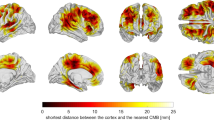Abstract
A number of imaging techniques have been used to investigate changes produced in the brain by boxing. Most morphological studies have failed to show significant correlations between putative abnormalities on imaging and clinical evidence of brain damage. Fenestration of the septum pellucidum, with formation of a cavum, one of the most frequent observations, does not appear to correlate with neurological or physiological evidence of brain damage. Serial studies on large groups may be more informative. Magnetic resonance spectroscopy and cerebral blood flow studies have been reported in only small numbers of boxers; serial studies are not available to date.
Similar content being viewed by others
Author information
Authors and Affiliations
Additional information
Received: 5 August 1991/Accepted: 5 August 1999
Rights and permissions
About this article
Cite this article
Moseley, I. The neuroimaging evidence for chronic brain damage due to boxing. Neuroradiology 42, 1–8 (2000). https://doi.org/10.1007/s002340050001
Issue Date:
DOI: https://doi.org/10.1007/s002340050001




